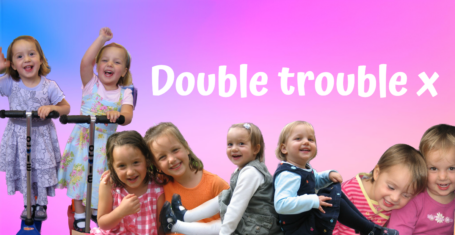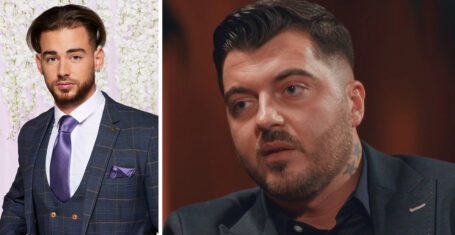
Cambridge Creatives Tell All
BETH SWORDS talks to Cambridge Creatives about bringing direction to the world of Cambridge art and their analogous relation to soft drugs.
Cambridge Creatives is an online art magazine and the brainchild of two Magdalene students, Eliska and Jack. For the time being, it’s just Eliska and Jack but the network has the potential to become extensive, bringing together the current disparate setup in place.
BETH SWORDS chats to them about the project.
What’s the idea?
Eliska: Essentially, we felt like there was a gap in the market in Cambridge. We wanted an online art network – there is loads of stuff going on in different colleges, loads of different magazines. There’s Queens’ Art Society but nothing central to bring it all together. Our big aim is to in the end have a magazine to bring everything together.
There’s something like the ADC for theatre but nothing equivalent for art. We just wanted to make art more inclusive and less intimidating. We want people to make submissions that may not engage in this world normally. It’s up to what people want to do.
Cambridge Creative Jack, Cambridge Creative groupie (me), Cambridge Creative Eliska
How many different sections will you have?
Jack: Photography, film, illustration, writing and music. People can submit any work they want to have on the website. It is not hierarchical or anything. So, there’s someone wanting to do something on ‘Creativity and Mental Health’ and we are planning a bi-weekly column on it. We don’t discriminate against submissions at all.
Eliska: Basically, we’re a complete democracy.
A photo from Ben Day’s submission
It seems so all-embracing, what happens if you get swamped with submissions?
J: We have assignments and then, on top of that, people can submit what they want. For the moment, we want a website designer so we can get it as extensive as possible. It’s all developing itself at the moment. So, if we ever got swamped, we would have to simply develop the website further.
You say you are a “complete democracy”, is there no means of quality control? No vetting?
E: There is no quality control. For something like The Tab or Varsity, they are more exclusive. I did a lot of photography for The Tab in my second year and then became exclusively that publication’s photographer. This is a platform that’s not controlled – should just be a stage with no limits on which people present their work. We are also setting up profiles – a short biography of various artists and some of their work so that if someone is looking for an illustrator, say, they can look them up on our site.
J: It’s more about the artists themselves rather than being a publication. For example, the editorial team are designed to spotlight artists as well. This not necessarily ‘quality control’ as such but just drawing attention to certain artists.
You speak of the site being a “platform”, is there a more interactive element? It makes art into a very open discipline, do you think this will lead to greater collaboration and artistic innovation?
E: It’s still a baby. It’s all developing. Because we’ve left it so open-ended and people have the freedom to put up what they want and write what they want, it makes it all quite organic and it depends on who wants to participate. However, yes, we really want collaborations where people share their knowledge. We’ve talked about workshops, even online workshops. Maybe even one of the assignments can be a collaboration assignment.
Did you model it on any similar art blogs?
J: I suppose the only really thing that is similar is the Guardian Witness and their assignment concept. We hope to develop the assignments a bit more. So, for example, if we had an assignment on ‘Light’, we could run a photography workshop on light.
There is a lot of hoo-haa at the moment against art going online with Amazon starting to sell artwork. Do you plan on monetising the project? It’s argued that this makes art more of a commodity. Where do you stand on that? But also, is there anything lost by having it online – different angles, lighting, textures, dimensions?
E: I think that’s further proof of the snobbishness around art – something that we want to breakdown. The major reason it’s online is because we want to make it accessible. We are not in a position to make a major investment in something and this way the starting-up costs were cheap. At the moment, it is just a means of organisation.
J: Yeah, I think there is a little bit lost but we aim to have events too. It’s like soft drugs. It’s a gateway drug, not hard drugs – something to lead onto something else.
Cambridge has had artists and photographers like Roger Fry, Quentin Blake and Mick Rock. Who’s your favourite ex-Cambridge artist?
E: Quentin Jones. She was a philosophy student and then, she went to London Central St. Martins to do Illustration. Now, she’s doing ‘stop motion’ videos and advertising videos. I think it takes such guts to go from something so academic to something so fickle like the arts. We wanted to start to give more of a platform to what people are doing all over the place. Give them more of a voice and a chance. I really like Law but then, really like Photography and have been doing it for a long time.
An example of Quentin Jones’ surrealist work
J: We just want to say it’s okay to do something artistic.
The discussion then descended into debates over peanut butter, Kit Kats and the role of Wagon Wheels in today’s society. Clearly, Eliska and Jack are an innovative, perceptive twosome. Cambridge Creatives really has the potential to tap into and provide direction for the extensive, informal art network, already in existence. Watch this space.
Submissions are sent to [email protected].









































